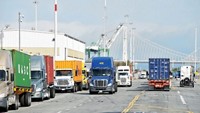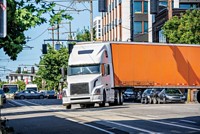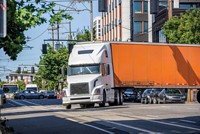Advertisement
Grab your lab coat. Let's get started
Welcome!
Welcome!
Create an account below to get 6 C&EN articles per month, receive newsletters and more - all free.
It seems this is your first time logging in online. Please enter the following information to continue.
As an ACS member you automatically get access to this site. All we need is few more details to create your reading experience.
Not you? Sign in with a different account.
Not you? Sign in with a different account.
ERROR 1
ERROR 1
ERROR 2
ERROR 2
ERROR 2
ERROR 2
ERROR 2
Password and Confirm password must match.
If you have an ACS member number, please enter it here so we can link this account to your membership. (optional)
ERROR 2
ACS values your privacy. By submitting your information, you are gaining access to C&EN and subscribing to our weekly newsletter. We use the information you provide to make your reading experience better, and we will never sell your data to third party members.
Pollution
Environmental injustice linked to urban natural gas leaks
Ultrasensitive methane detection shows that gas leaks are more common in low-income areas and communities of color
by Raleigh McElvery, special to C&EN
May 11, 2022

In 2018, a series of explosions and fires spurred by leaks in underground gas lines burned 100 homes, displaced 8,000 people, and killed one man in Massachusetts’s Merrimack Valley. Besides the possibility of catastrophic explosions, natural gas leaks also release the greenhouse gas methane into the atmosphere, generate nauseating odors that can make people sick, and bump up residents’ utility bills by increasing the cost of gas delivery. Now, a new study links a community’s racial makeup and income level to local natural gas leaks—revealing patterns of “infrastructure injustice” across the US (Environ. Sci. Technol. 2022, DOI: 10.1021/acs.est.2c00097).
The study authors are members of a long-term research project pioneering ultrasensitive sensors mounted on the cars that Google uses to take photos for Google Street View. The sensors can detect tiny changes in the concentration of methane—the main component of natural gas—in the air and can track down leaks as they drive around a neighborhood.
Coauthor Zachary D. Weller of Pacific Northwest National Laboratory says this study is among the first to examine leaks in metropolitan natural gas distribution systems through the lens of environmental justice.
Between 2014 and 2018, the researchers conducted leak detection surveys across 13 US metropolitan areas. They then developed open-source data processing algorithms and created statistical models in order to investigate the relationship between the number of leaks per mile of roadway and certain socio-demographic indicators reported by the US Census Bureau’s American Community Survey.
Across all metro areas combined, leaks were more common in places with a greater proportion of people of color and in places with lower household incomes. The study estimates that natural gas leaks per mile are 37% higher in neighborhoods where a majority of survey respondents did not identify as White alone compared with predominantly White neighborhoods, and 26% higher in average-income neighborhoods compared with relatively high-income ones.
The researchers considered whether this was because people of color and less wealthy people have been historically relegated to neighborhoods with more deteriorated infrastructure. To control for that, they used the age of nearby houses as a proxy for infrastructure age because there are very little publicly available data on the latter. When they used this strategy to account for the age of the local pipelines, the trends persisted.
While this might mean that housing age is not as accurate an indicator of infrastructure age, it also could mean that systemic inequities beyond pipeline quality drive unequal exposure to natural gas leaks, says Felipe M. Jordán, a sustainable development expert at the University of California, Santa Barbara.
Anjum Hajat, an expert in environmental health disparities at the University of Washington School of Public Health, says the inequities that this study reveals are in line with decades of environmental justice literature, and the results aren’t surprising because the demographics highlighted in the study tend to have fewer resources and a lack of political representation. “The broader social issue, I think, is around power—and who holds that power and yields that power,” she says.
The study is a good foray into exploring the inequities of natural gas distribution, she adds, but “we got a lot more work to do.”





Join the conversation
Contact the reporter
Submit a Letter to the Editor for publication
Engage with us on Twitter